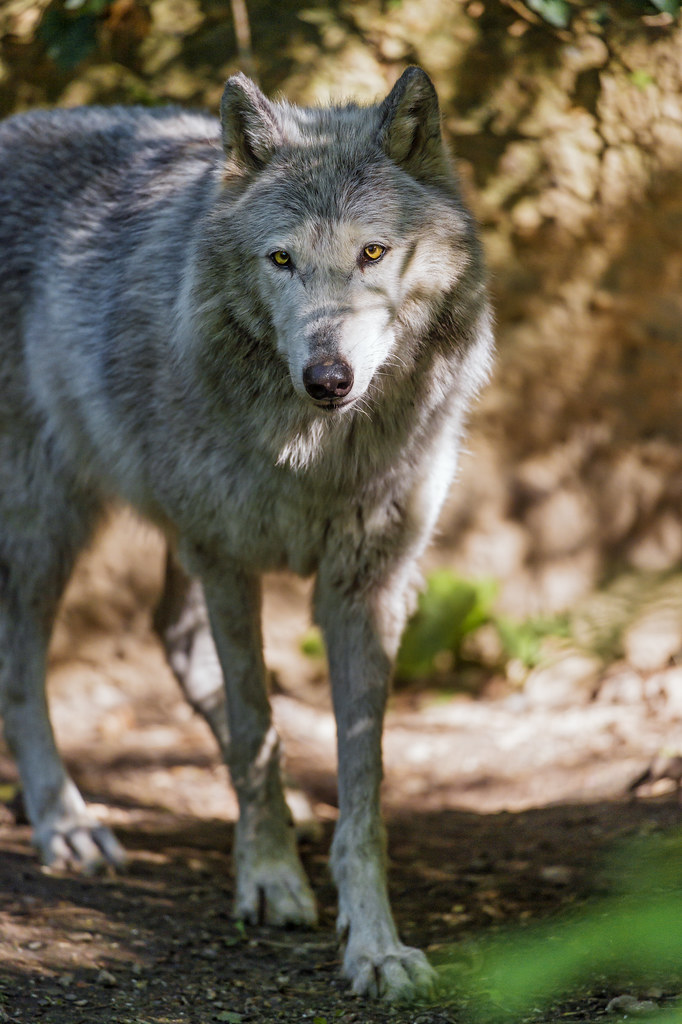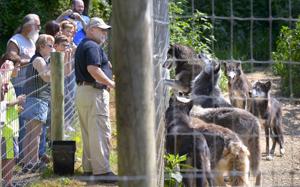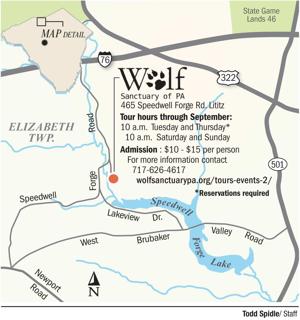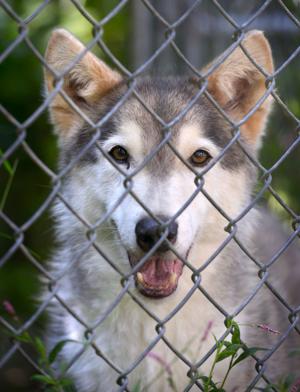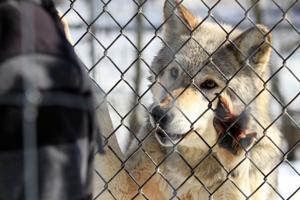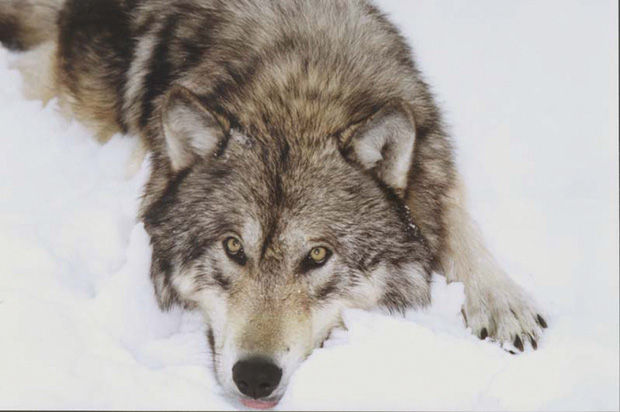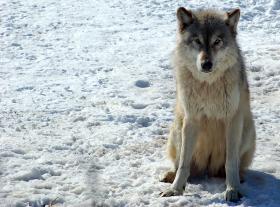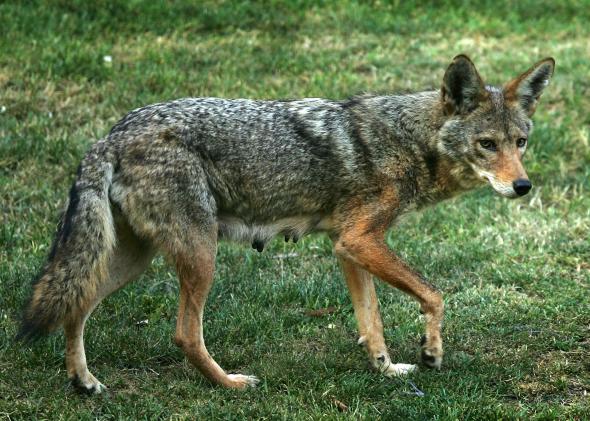Her name is Cleopatra :-)
On
a 65-43 vote in Lansing, the House affirmed a citizen-initiated measure
that puts the Natural Resources Commission in charge of designating
game species and setting hunting and fishing policy. The Senate gave its
approval earlier this month. Because the governor's signature is not
required, the measure will become law.
Lawmakers didn't have it take effect immediately. That means the effective date will be 90 days after the legislative session ends this fall, which rules out a wolf hunt until next year at the earliest. "This is an important step to protecting the rights to hunt, fish and trap in Michigan from radical animal rights organizations," said Dan Eichinger, executive director of Michigan United Conservation Clubs.
But opponents weren't surrendering. A group called Keep Michigan Wolves Protected labeled the measure "patently unconstitutional" and vowed to challenge it in court while continuing to campaign for voter rejection of two measures on the November general election ballot that involve wolf hunting.
The legislative action was the latest in a battle that began in 2012, when the combined gray wolf population of Michigan, Minnesota and Wisconsin was dropped from the federal endangered species list. The wolves had bounced back strongly after disappearing from most of the Great Lakes region in the last century. With federal protections removed, each state was put in charge of managing its wolves. Minnesota and Wisconsin have moved forward with hunts.
Michigan legislators enacted a 2012 bill making the wolf a game species — the first step toward allowing it to be hunted. The next year, they followed up with a law giving the Natural Resources Commission, a seven-member panel appointed by the governor, authority to make such designations.
Opponents gathered enough petition signatures to put both the measures to statewide referendums on the ballot this fall. But they weren't able to prevent the commission from permitting a hunt last year, during which 22 wolves were killed. The Department of Natural Resources in April estimated the population at 636.
Even if voters repeal both of the earlier laws, the newly approved measure will remain in effect. Supporters sought to make it referendum-proof by attaching a $1 million appropriation to battle invasive Asian carp, since spending bills are not subject to statewide votes. It also provides free hunting and fishing licenses for active military members.
Opponents contend that wrapping the three provisions into one measure violates the state Constitution. "We're going to sue and knock it out," said Jill Fritz, director of Keep Michigan Wolves Protected. Her group contends the state's wolves remain on tenuous footing and there are other means of dealing with animals that cause problems. Farmers can legally shoot wolves attacking their livestock.
During floor debate, lawmakers opposing the initiative said they weren't against hunting but believed the matter should be settled at the ballot box. "This vote is about validating citizens' rights to participate in government," said Rep. Pam Faris, a Democrat from Clio.
Supporters countered that people favoring wolf hunts also exercised their rights by gathering some 300,000 signatures — enough to put the initiative before the Legislature. "We're not saying get rid of all the wolves," said Rep. Ed McBroom, a Republican from Vulcan who favored the measure. "We can live with them in the U.P., but we need a management approach that includes all the options, like we have for all other types of wildlife we manage in this state."
The state Department of Natural Resources, which advises the commission, endorsed the measure and has argued in favor of tightly regulated wolf hunts.
source
Lawmakers didn't have it take effect immediately. That means the effective date will be 90 days after the legislative session ends this fall, which rules out a wolf hunt until next year at the earliest. "This is an important step to protecting the rights to hunt, fish and trap in Michigan from radical animal rights organizations," said Dan Eichinger, executive director of Michigan United Conservation Clubs.
But opponents weren't surrendering. A group called Keep Michigan Wolves Protected labeled the measure "patently unconstitutional" and vowed to challenge it in court while continuing to campaign for voter rejection of two measures on the November general election ballot that involve wolf hunting.
The legislative action was the latest in a battle that began in 2012, when the combined gray wolf population of Michigan, Minnesota and Wisconsin was dropped from the federal endangered species list. The wolves had bounced back strongly after disappearing from most of the Great Lakes region in the last century. With federal protections removed, each state was put in charge of managing its wolves. Minnesota and Wisconsin have moved forward with hunts.
Michigan legislators enacted a 2012 bill making the wolf a game species — the first step toward allowing it to be hunted. The next year, they followed up with a law giving the Natural Resources Commission, a seven-member panel appointed by the governor, authority to make such designations.
Opponents gathered enough petition signatures to put both the measures to statewide referendums on the ballot this fall. But they weren't able to prevent the commission from permitting a hunt last year, during which 22 wolves were killed. The Department of Natural Resources in April estimated the population at 636.
Even if voters repeal both of the earlier laws, the newly approved measure will remain in effect. Supporters sought to make it referendum-proof by attaching a $1 million appropriation to battle invasive Asian carp, since spending bills are not subject to statewide votes. It also provides free hunting and fishing licenses for active military members.
Opponents contend that wrapping the three provisions into one measure violates the state Constitution. "We're going to sue and knock it out," said Jill Fritz, director of Keep Michigan Wolves Protected. Her group contends the state's wolves remain on tenuous footing and there are other means of dealing with animals that cause problems. Farmers can legally shoot wolves attacking their livestock.
During floor debate, lawmakers opposing the initiative said they weren't against hunting but believed the matter should be settled at the ballot box. "This vote is about validating citizens' rights to participate in government," said Rep. Pam Faris, a Democrat from Clio.
Supporters countered that people favoring wolf hunts also exercised their rights by gathering some 300,000 signatures — enough to put the initiative before the Legislature. "We're not saying get rid of all the wolves," said Rep. Ed McBroom, a Republican from Vulcan who favored the measure. "We can live with them in the U.P., but we need a management approach that includes all the options, like we have for all other types of wildlife we manage in this state."
The state Department of Natural Resources, which advises the commission, endorsed the measure and has argued in favor of tightly regulated wolf hunts.
source

